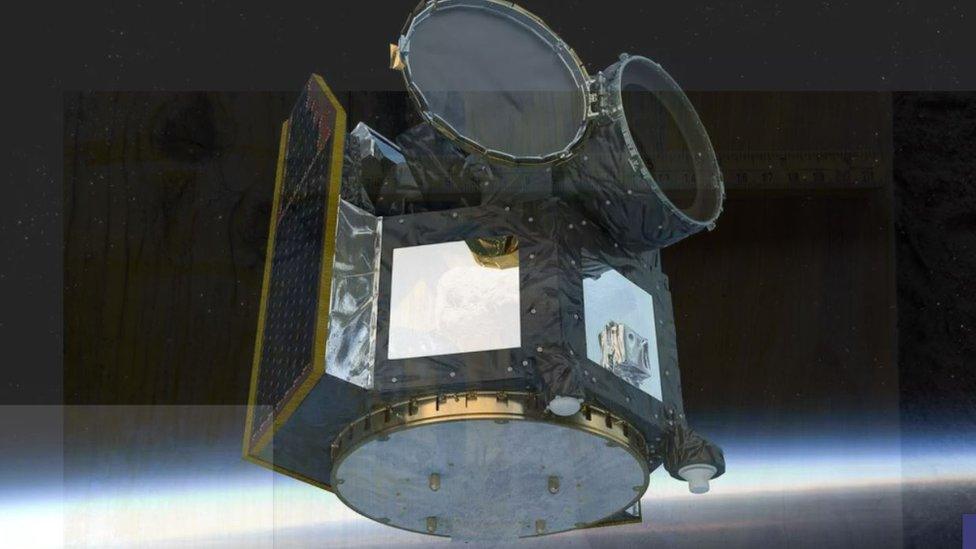Exoplanet with metallic clouds could be shiniest yet
- Published
- comments

Exoplanet LTT9779 b orbiting its host star
Astronomers have identified a planet so reflective it acts like a giant mirror in the universe.
Planet LTT9779 b. is an exoplanet, which means it orbits a different star to our own Sun.
Data from the European Space Agency's (ESA) exoplanet satellite, Cheops, shows LTT9779 b. is an exoplanet even shinier than Venus, the brightest object in our night sky after the Moon.
This is because of the reflective metallic clouds surrounding it.
What is Cheops?
Cheops is short for the ESA's CHaracterising ExOPlanet Satellite.
It is the first mission dedicated to studying known exoplanets.
There are hundreds of billions of stars in our galaxy alone and technology like Cheops can identify the planets orbiting these stars.
It makes observations of these exoplanets as they pass before their star.

Cheops is the satellite that has been studying the exoplanet in detail
What do we know about the shiny exoplanet?
The LTT9779 b exoplanet is around the size of Neptune, the fourth largest planet in our solar system.
The metallic clouds are mostly made of silicate - the same stuff that sand and glass are composed of - mixed with metals like titanium.
The results are pretty dramatic.
"Imagine a burning world, close to its star, with heavy clouds of metals floating aloft, raining down titanium droplets," says James Jenkins, astronomer at Diego Portales University and CATA (Santiago, Chile).
In a study published in the journal Astronomy & Astrophysics James and co-author Vivien Parmentier found some surprises.

This is how the exoplanet acts like a mirror
Why is the exoplanet so special?
Firstly they discovered the planet's side facing its star is incredibly hot, estimated to be about 2000 °C.
According to experts any planet with a temperature over 100 °C is too hot for metallic clouds like those of LTT9779 b.
The researchers decided that in the same way that running a hot tap in a bathroom forms clouds because the air is full of vapour, so too LTT9779 b forms metallic clouds despite being so hot - because the atmosphere is full of silicate and metal vapours.
The second surprise was a planet of its massive size and temperature being so close to its star.
The planet has a radius 4.7 times bigger than Earth's and is so close to its star that a year on LTT9779 b takes just 19 hours.
Previously planets with an orbit this short would either be gas giants or small rocky planets.
"It's a planet that shouldn't exist," says Vivien.
"We expect planets like this to have their atmosphere blown away by their star, leaving behind bare rock."
Again, the researchers found a solution to this mystery.
They concluded that the metallic clouds reflected light - stopping the planet from getting too hot and evaporating.
Now astronomers hope there will be an opportunity to follow up the Cheops observations with the Hubble and James Webb space telescopes to get an even more detailed picture of this fascinating exoplanet.
